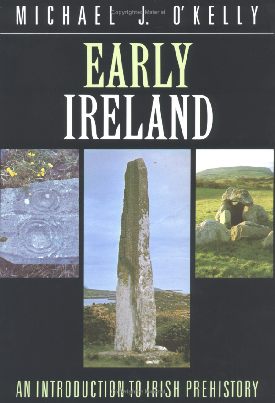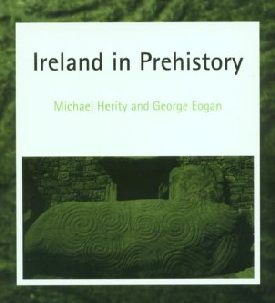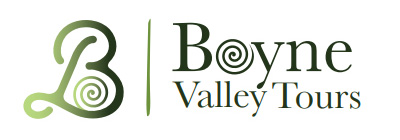Early Ireland - An Introduction to Irish Prehistory

Early Ireland - An Introduction to Irish Prehistory by Michael J. O'Kelly
Early Ireland offers an authoritative introduction to the riches of Irish prehistory - a span of eight thousand years from the end of the Ice Age to the first centuries of the Christian era.
The book provides a clear account of the development of Irish society from its beginnings as a postglacial culture of hunters and gatherers, through the glory of its golden age in the second millennium BC, to the technological advances stimulated by the discovery of iron and, in the last centuries BC, the growth of a Celtic art style of unrivalled power and individuality.
Purchase at Amazon.com or Amazon.co.uk
Many of the developments in research and excavation detailed in the book were carried out or initiated by the author himself. In Early Ireland he encapsulates in inimitable style the fruits of more than three decades spent imparting his love and knowledge of Ireland, its people and its antiquities.
Contents:
- The Ice Age
- Palaeolithic man
- Late Glacial and Postglacial stages
- Pollen zones
- The Mesolithic period
- Early Mesolithic
- Later Mesolithic
- The Neolithic period
- The first farmers
- Material equipment in the Neolithic
- Settlement
- Ancient field systems and enclosures
- The Late Neolithic/Beaker period
- Beaker pottery
- Settlement
- Megaliths
- Megalithic tombs
- The megalith builders
- Single burials and earthen and stone enclosures
- Neolithic single burials
- Earthen and stone enclosures
- Ritual enclosures
- Stone circles
- Anomalous sites
- The Bronze Age
- Chronology
- The conventional framework of the Irish Bronze Age
- Technology
- Bronze objects
- Gold
- Gold objects
- Hoards
- Other materials
- Bronze Age burial
- Cist burial
- Pit and Urn burial
- Cinerary Urns
- Flat cemeteries
- Cemetery mounds
- Barrows
- Late Bronze Age burial
- Bronze Age settlement and stone monuments
- Occupation sites
- Cooking places
- Stone monuments
- Rock art
- The Iron Age
- The European Iron Age
- The Celts
- Language
- Early Irish literature
- The archaeological evidence
- Technology
- The artefacts
- Carved stones
- Human representations
- Later prehistoric settlement
- Lake settlements
- Enclosed sites
- Hut circles
- Hillforts
- Other excavated sites
- Iron Age burial
- Burial mounds
- Inhumation
- Long stone cists
- Intrusive burials
- Appendix A Radiocarbon dating
- Appendix B Dendrochronology
- Appendix C Pollen analysis
- Appendix D Calibration of radiocarbon dates
Preface by Glyn Daniel
Professor Michael J. O'Kelly (known to his family and friends as Brian) was born in County Limerick in 1915. I first met him in the late thirties when he was a student of Seán P. Ó Ríordáin's in the Department of Archaeology at University College, Cork. When Seán P. Ó Ríordáin moved in 1946 to the Chair of Archaeology in University College, Dublin, his old pupil and friend succeeded him in Cork, an appointment O'Kelly held with distinction until his retirement. He died suddenly in October 1982, the day before the Cork Historical and Archaeological Society was giving a special dinner to celebrate his retirement.For nearly forty years Brian O'Kelly had worked in the field and in the academic world of Irish archaeology to its lasting benefit. He could never be described as an insular archaeologist. He travelled extensively outside Ireland, went to all the main international conferences, was internationally minded and saw the ancient Irish past in a wide European context. A brilliant and painstaking excavator, he worked on a wide variety of sites from the Late Stone Age to medieval times and was meticulous and prompt in publishing them. The extent and range of his interests and achievement is well reflected in his Festschrift, Irish Antiquity, published in 1981.
For fourteen years he excavated the great Neolithic burial mound of Newgrange in the Boyne Valley and was able to date its construction to before 3000 BC. In reviewing his Newgrange: Archaeology, Art and Legend (1982), Professor P. R. Giot wrote: 'O'Kelly was a man of the field, an expert excavator, an experimental archaeologist, not at all involved in pseudo-marxist, pseudofreudian, or pseudo-structuralist interpretations. He was an archaeologist, not an ethno-archaeologist' (Antiquity, 57,1983,150).
In the preparation of his Newgrange book, as in all his work in the field and in the study, he was most ably helped by his wife Claire. They had been students together and theirs was a marriage of great happiness and scholarly co-operation. Mrs O'Kelly, an archaeologist in her own right, has made a special study of the monumental art of the Boyne tombs which is summarized in concise form in her invaluable Illustrated Guide to Newgrange and the other Boyne Monuments (1978).
For many years I and others had been urging Brian to write a general synthesis of lrish prehistory and he had in fact completed it in draft before his death. The manuscript has now been edited, referenced and fully updated by his wife. Claire O'Kelly has completed what Brian started, and it is a pleasure to write this prefatory note to a book which will take its place as the definitive work on Ireland in pre-Christian times for many years to come. It is a work of scholarly love and reflects the greatest credit on both.
Reviews:
"...this book represents all that was best in the previous generation of Irish archaeologists. Written by a man who was one of the foremost of that generation, it could not have been otherwise." American Journal of Archaeology."...a delightful and informative book which is aptly described by its title. Not least of the many positive aspects to this book is the author's clear and vigorous prose style which provides lucid descriptions of complex sites or phenomena....a strong recommendation for this excellent, well-written book. As it is available in paperback as well as hardback, it deserves a place on the shelves of anyone interested in the history and culture of Ireland." Frederick Suppe, Journal of Irish Studies.
 Ireland in Prehistory by Michael Herity and George Eogan.
Ireland in Prehistory by Michael Herity and George Eogan.First published in 1977, Ireland in Prehistory was written primarily for university level students. However the general reader should also find the story of prehistoric Ireland of interest. Purchase at Amazon.com or Amazon.co.uk
Boyne Valley Private Day Tour
 Immerse yourself in the rich heritage and culture of the Boyne Valley with our full-day private tours.
Visit Newgrange World Heritage site, explore the Hill of Slane, where Saint Patrick famously lit the Paschal fire.
Discover the Hill of Tara, the ancient seat of power for the High Kings of Ireland.
Book Now
Immerse yourself in the rich heritage and culture of the Boyne Valley with our full-day private tours.
Visit Newgrange World Heritage site, explore the Hill of Slane, where Saint Patrick famously lit the Paschal fire.
Discover the Hill of Tara, the ancient seat of power for the High Kings of Ireland.
Book Now
Home
| Newgrange
| Knowth
| Dowth
| Hill of Tara
| Fourknocks
| Loughcrew
| More Places
| Labyrinths
| Local Info
| Art Works
| Articles
| Images
| Books
| Links
| Boyne Valley Tours
| Contact
